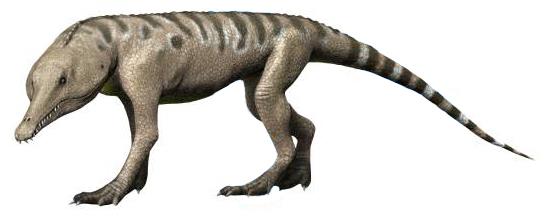|
Stenoscelida
''Stenoscelida'' (meaning "narrow hind leg") is a genus of proterochampsid archosauriforms from the Late Triassic Santa Maria Supersequence ( Paraná Basin) of Rio Grande do Sul, Brazil. The genus contains a single species, ''S. aurantiacus'', known from a right hind limb. Discovery and naming The holotype specimen, CAPPA/UFSM 0293, was found at the '' Exaeretodon'' sub-Assemblage Zone (''Hyperodapedon'' Assemblage Zone) of the Santa Maria Supersequence (lower Candelaria Sequence) in the Paraná Basin. This locality is dated to the late Carnian/early Norian ages of the upper Triassic period, around 228 million years old. It consists of a complete, articulated right hind limb. In 2022, ''Stenoscelida aurantiacus'' was described as a new genus and species of proterochampsid archosauriforms by Rodrigo T. Müller, Mauricio S. Garcia, and André O. Fonseca based on these remains. The generic name, "''Stenoscelida ''", is derived from the Greek words " στενός", meaning "n ... [...More Info...] [...Related Items...] OR: [Wikipedia] [Google] [Baidu] |
Proterochampsidae Proterochampsidae is a family of proterochampsian archosauriforms. Proterochampsids may have filled an ecological niche similar to modern crocodiles, and had a general crocodile-like appearance. They lived in what is now South America in the Middle and Late Triassic. Description Proterochampsids have long, crocodile-like skulls. The posterior portion of the skull is wide while the snout is very narrow. Most proterochampsids also have downturned snouts. Like many early archosauriforms, they also have dermal armour. Proterochampsids have small holes called dorsal fenestrae at the top of their skulls. Unlike other early archosauromorphs, they do not have a parietal foramin, which i |
